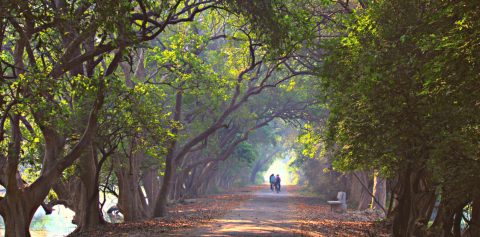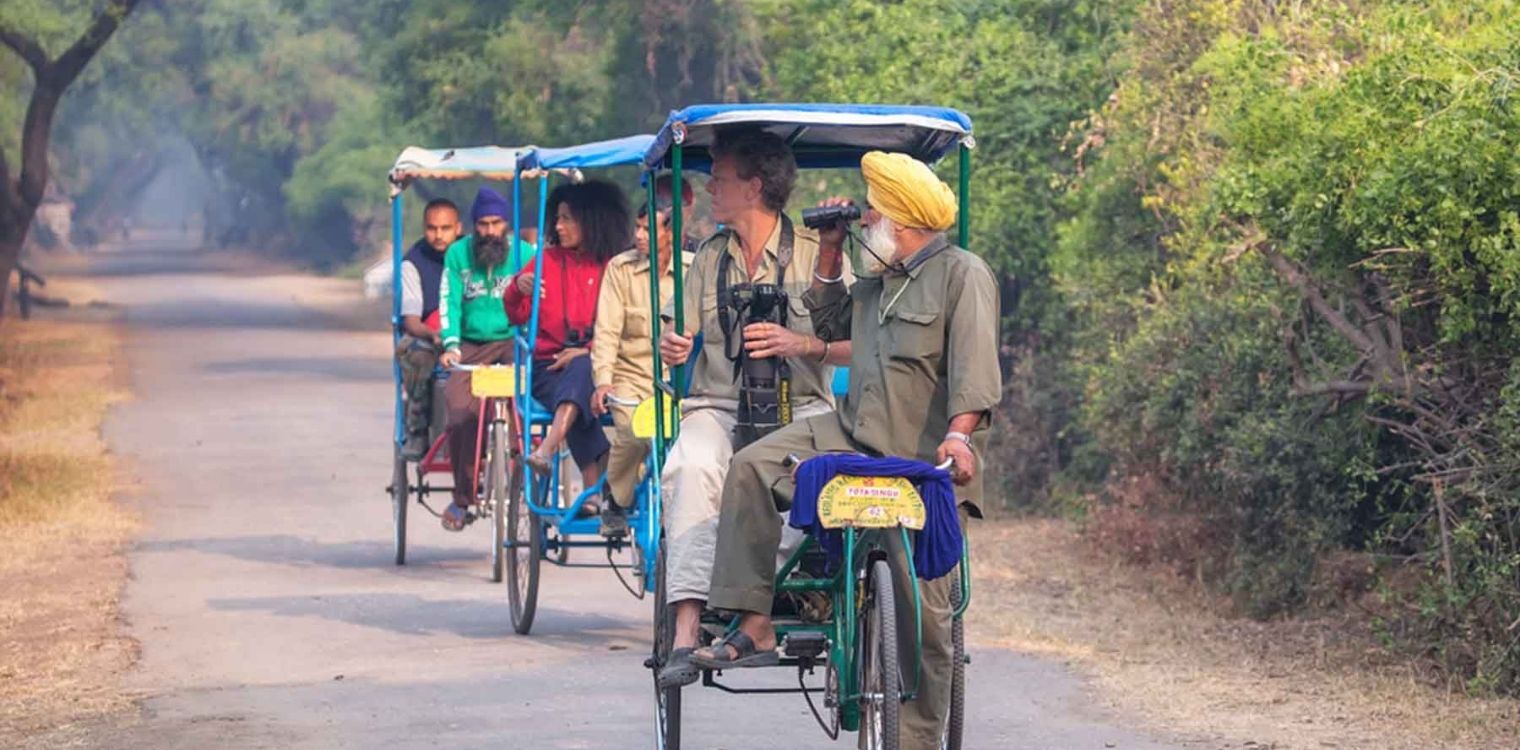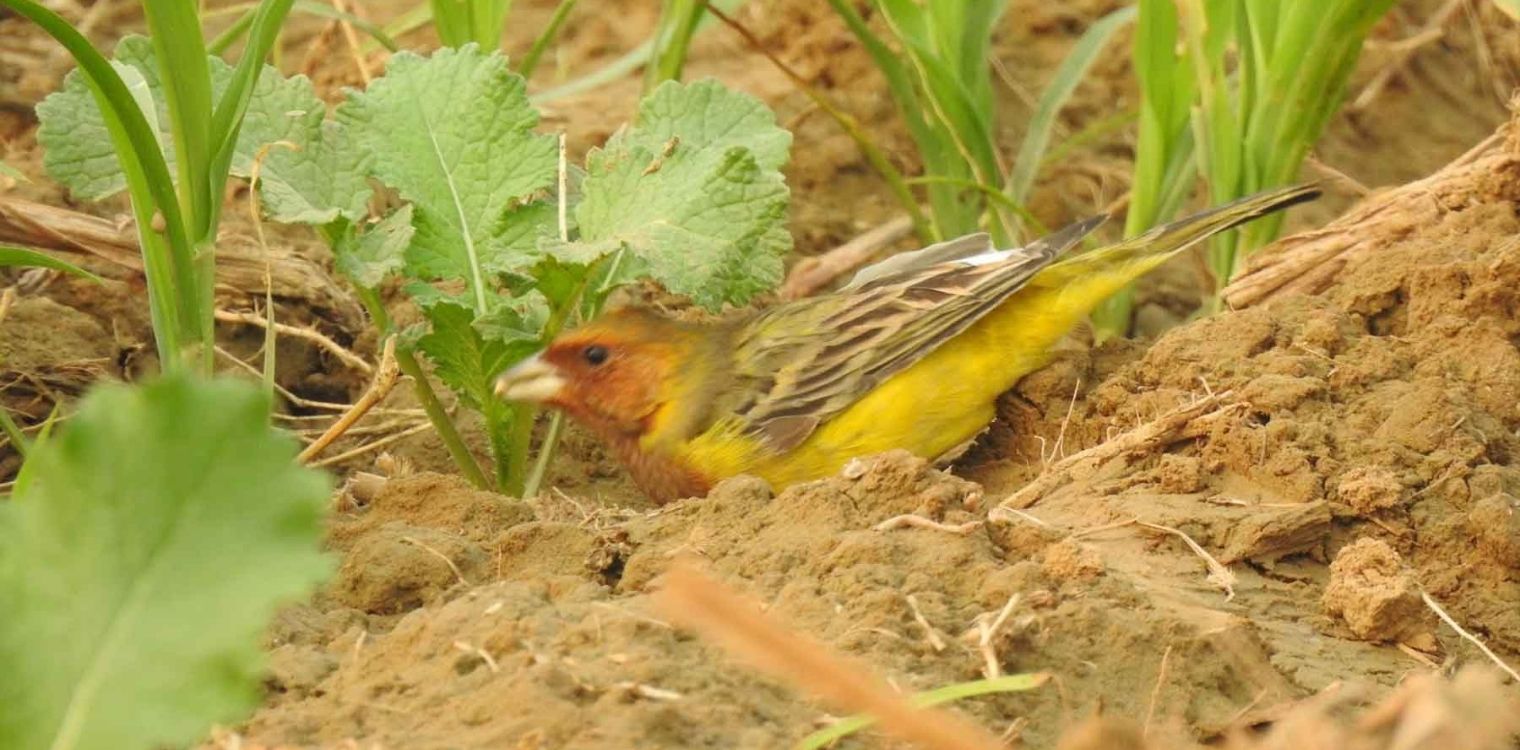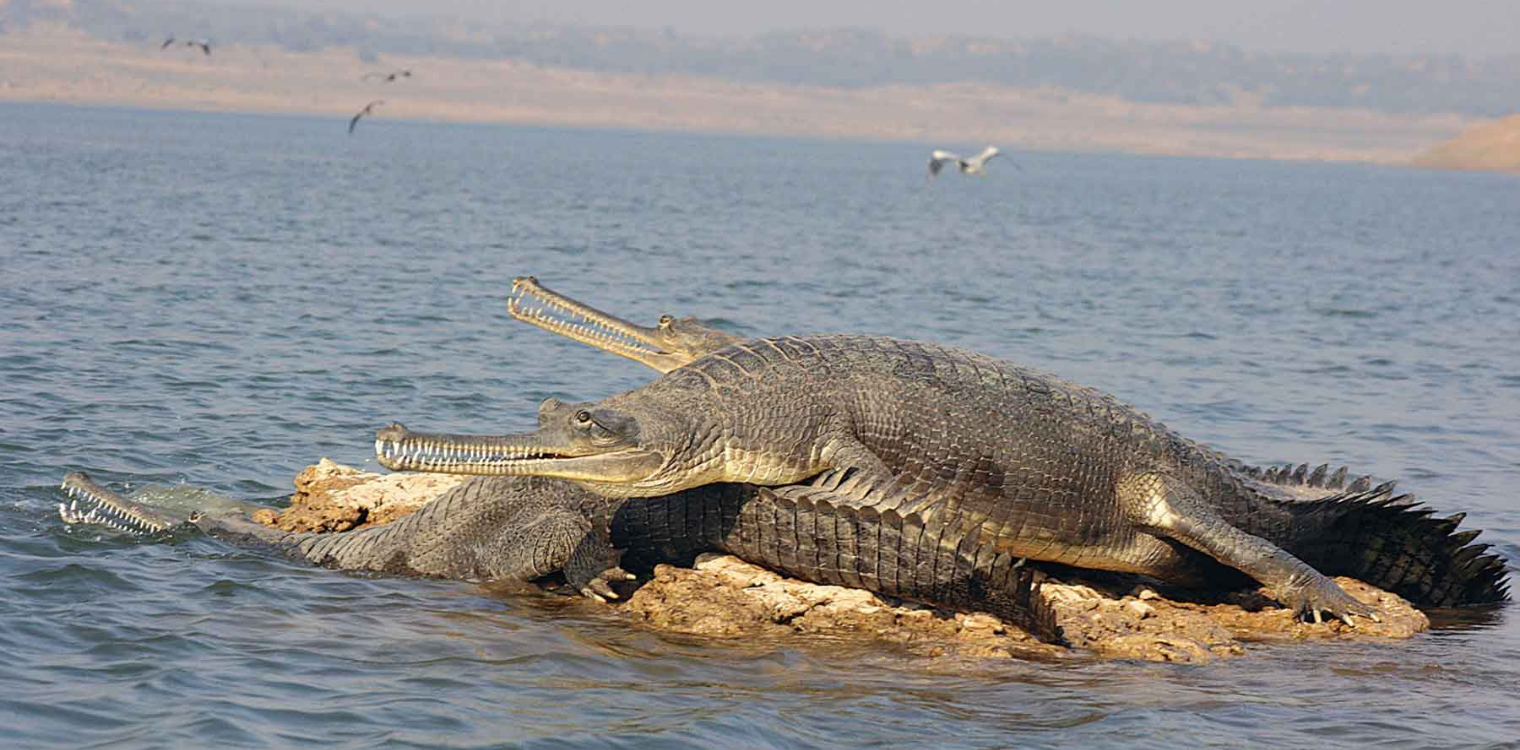
Leaving Delhi before sunrise, we arrived in Bharatpur early in the morning. After a quick breakfast, we spent the full day birding within Keoladeo National Park, one of the best-known birding sites in the country, making our way around this large reserve in cycle-rickshaws. We spent time birding within a variety of habitats, including scrub, woodland, lakes, and marshes to try to maximize our species count, and we managed to record 120 species for the day!
-
Birding in the scrub and woodland produced Grey Francolin, Indian Peafowl, Barred Buttonquail, Yellow-footed Green Pigeon, Indian Scops Owl, Dusky Eagle-Owl, Spotted Owlet, Eurasian Hoopoe, Eurasian Wryneck, Bay-backed and Long-tailed Shrikes, Grey-headed Canary-flycatcher, White-eared Bulbul, Eastern Orphean Warbler, Pied Myna, Brahminy and Rosy Starlings, Tickell’s Thrush, Bluethroat, Indian Robin, Red-breasted Flycatcher, Black Redstart, Red Avadavat, and Indian Silverbill, but the star bird of our time in this habitat was probably the stunning male Siberian Rubythroat at close range.
The wetland areas were also full of birds, with many herons, egrets, storks, and assorted wildfowl. Highlights here included Bar-headed Goose, Knob-billed Duck, Ruddy Shelduck, Red-crested Pochard, Ferruginous Duck, nesting Black-necked Stork, Black Bittern, Oriental Darter, Sarus Crane, White-tailed Lapwing, Pheasant-tailed Jacana, White-throated and Pied Kingfishers, and Citrine Wagtail.

-
The open areas and tower hides also provided great vantage points to view raptors, and we saw Western Marsh Harrier, Black-winged Kite, Egyptian Vulture, and Crested Serpent, Indian Spotted, Greater Spotted, and Eastern Imperial Eagles. There was also plenty of interesting wildlife to keep us busy, with a huge Indian python resting in the heat of the day, Bengal Monitor, Rhesus Macaque, Sambar, Chital, Nilgai, Wild Boar, Golden Jackal, and the ubiquitous Five-striped (or Northern) Palm Squirrel.
The next day, we made an early departure from our hotel to get into some farmland near Bharatpur, where our main target was found with surprising ease, unlike two days prior when we were looking for it! Our target was Indian Courser, and we had at least four birds that gave good scope views. Trying to get very close to them was not possible due to the lack of anything for us to hide behind in our approach. Nevertheless, it was great to find this highly sought-after species that does have a habit of going missing. There were quite a few new birds for us out in the farmland, and we spent a couple of hours enjoying an assortment of species, including calling Black Francolin, Egyptian Vulture, Sarus Crane, Indian Roller, Eurasian Hoopoe, Common Kestrel, Isabelline Shrike, Ashy-crowned Sparrow-Lark, Indian Bush Lark, Oriental Skylark, Crested Lark, Greater Short-toed Lark, Isabelline and Desert Wheatears, Red-headed Bunting, Richard’s and Tawny Pipits, and a number of wagtails – Western Yellow, Citrine, White, and White-browed Wagtails. After this birding session we started our journey to the delightful Chambal Safari Lodge, visiting the very impressive Fatehpur Sikri World Heritage Site en route, one of the best-preserved collections of Mughal architecture in India. After our time here we continued our journey, arriving near dusk at our accommodation. We enjoyed a very nice meal and had a walk around the grounds at night, finding Brown Hawk-Owl, Indian Scops Owl, Common Palm Civet, Indian Flying Fox, and Indian Long-eared Hedgehog.

-
We took an early morning drive the next day to the Chambal River. A brief stop in some scrub near the river produced the secretive Sirkeer Malkoha, Crested Honey Buzzard, Plum-headed Parakeet, Grey-breasted Prinia, Common and Yellow-eyed Babblers, Baya Weaver, and White-capped Bunting. Once on the water, we had great looks at the stunning River Lapwing, which was numerous along the river banks, and we found a small group of Great Stone-curlews. Both River and Black-bellied Terns were present in small numbers, and a Pallas’s Gull put in an appearance too. A large flock of Bar-headed Geese was a spectacular sight as they flew in. While on the river we also saw three turtle species and two species of crocodile: Mugger (or Marsh Crocodile) and the critically-endangered Gharial (or Fish-eating Crocodile). After our trip out to the river a spot of birding in the lodge grounds produced day-roosting Brown Hawk-Owl and Spotted Owlet, Eurasian Hoopoe, Indian Grey Hornbill, and Brown-headed Barbet, among a number of common birds.

-
We had a long drive and a stop at the Taj Mahal World Heritage Site ahead of us, so after a wonderful lunch we pressed on, arriving at the Taj Mahal in the early afternoon. The Taj Mahal is one of the world’s most instantly recognizable sights. It was just as impressive in real life as we had hoped it would be. We had a guided walk around the area, taking in the beautiful architecture and history of the place. But being birders, we couldn’t help but scan the area for birds during the tour, and we picked up a nice Black-eared Kite among Black Kites, a Red-rumped Swallow in with some Barn Swallows, and a host of waders on the river. After our time here we continued our journey on to Delhi, where we had a rendezvous with our flight back home.
